TV newsrooms across the UK are undergoing a radical transformation. Out in the field, tapeless cameras and portable satellite uplinks have increased news teams' mobility while reducing the cost of transmission.
Meanwhile, within newsroom studios, the transition to file-based workflow is helping to streamline production and get stories to air faster, enabling editors to respond to consumer demand for immediacy. But what impact are these changes having on how journalists carry out their day-to-day work? Broadcast talks to four senior TV news journalists.
Tim Marshall is Sky News' foreign affairs editor.
He has covered conflicts in the Balkans, Iraq and Lebanon. His interview with the late Benazir Bhutto ahead of her return to Pakistan from exile was a world exclusive.
“Mostly the changes have been advantageous, cutting the cost of satellite time and excess baggage on flights,” says Marshall.
“On the negative side you are partially a pack horse as well as an international correspondent. The amount of necessary kit has reduced but everyone still carries personal luggage, a flak jacket and helmet so there's still an awful lot to lug around.” Sky News equips its crews with Panasonic's solid state recording format. Each 16GB card, the size of a cigarette pack, can carry an hour of footage - clearly an advance on cassettes.
“Camera-to-laptop transfer is also much faster,” he says. “We can simply plug a cable into the camera and download to Final Cut Pro. However, I struggle to locate the clips with this system. I was more comfortable shuttling through tape and spotting the event I needed. There appears no ability to do that - we have to click on each clip and look at it in real time.”
Marshall says he's had no training in the equipment, relying on the camera-operator's proficiency. Nonetheless he believes it's part of his job to understand what the kit can and cannot do.
“You are much more patient with colleagues working on a technical problem if you have an appreciation of the difficulties,” he says. “Before we set out I'll ask if they have night vision or a wide-angle lens or wireless laptop so I know what the potential for a story is.”
In Belgrade shortly after the capture of Radovan Karadzic, Marshall scouted the route of a nationalist march and potential hotspots for violence. Instead of knocking on doors asking if people had a phone line he enquired whether they had broadband.
“A friendly family with fast broadband and a balcony overlooking the street let us use their room as a base,” he describes. “We were live for 50 minutes, feeding images straight from the camera to the internet and into Isleworth while riots were happening literally 20 yards away. Operating from a satellite truck would have offered neither the high vantage point or the safety of our position.”
Eventually he believes all major urban areas will feature blanket WiMAX (a wireless communication standard). Small transmitters mounted to a camera will be all that's needed to broadcast to the world. “Authorities will always have ways of blocking a signal - just as the mobile network was closed during the morning of 7/7 - but there will be other technology enabling us to get to air.”
Gavin Hewitt has been special correspondent for BBC news since 2000.
He has covered Hurricane Katrina, the tsunami in Pakistan, and was one of the main reporters on the London bombings.
“Some journalists just out of journalism school are familiar with shooting and editing their own stories,” says Hewitt. “But on a network basis, and particularly among senior correspondents, you tend to work with a producer and a cameraman. In particular there are huge new demands on camera operators whose job has changed out of all recognition. They have had to reskill to learn nonlinear editing and to get images into a state in which they can be transmitted. My job is to understand what the technology can do and adjust my work accordingly.”
The basics of foreign reporting have not changed, he says. In fact, given the streams of audio-visual data, the core skills are now more important when it comes to delivering a coherent story from what are often confusing events on the ground.
“A reporter's principal role is to find information and order facts into a story and not to get diverted by technology,” says Hewitt. “We still view pictures on laptops, structure a story and lay audio track to images. What's changed is the ability to get a late-breaking story to air. One might, for example, send 30 seconds of fresh pictures just before the news and deliver a live-to-camera report while those images play out over the top. This gives a flexibility in presentation not possible a few years ago.”
Hewitt recalls a trip last June to a remote part of Ethiopia with cameraman Fred Scott. Together they were able to transmit a story about child death which led the 10 and 6 O'Clock News. “As a correspondent it is empowering to be able to command attention with strong images and get the story out wherever you are instead of driving back to the capital working through a local TV station and losing the immediacy.”
He has, though, had his share of technology glitches. “I am more fearful of technology in terms of getting it on air,” he admits. “We were one of the first to Ground Zero on 9/11 but for a whole combination of reasons we didn't make our satellite slot. In Burma it took several hours to transmit a three-minute piece. Although technology gives you great flexibility, you're not guaranteed to get the story out on time.”
Camera operators, he believes, face the real pressure of changing technology. “They are still in the process of moving to nonlinear systems. I have total confidence in some but others are learning the technology. If they don't understand the way something works, under pressure, we have a problem.”
Alan Fisher is London correspondent for Al Jazeera English.
He was previously at GMTV as chief correspondent where he reported from Bosnia and Iraq during the first Gulf War.
Fisher flew to Belgrade to cover the Balkan war in the late 1990s with a reporter from NBC who was taking two satellite dishes and two edit packs which required a staggering 68 flight cases.
“Including personal kit, you can now travel with fewer than a dozen cases,” he recalls. “Essentially you need a camera, laptop and a BGAN (broadband global area network) and you can report live from pretty much anywhere.”
Last year in Afghanistan, Fisher worked with the organisation's Kabul bureau to embed with the US army. “The fact that we had very lightweight kit enabled us to broadcast from the camp rather than waiting until the end to file. The army would not have allowed us to bring in lots of heavyweight gear.”
A decade ago Fisher says news reporting was less time critical. “I rarely took out an edit pack,” he remembers. “You shot material, wrote the story back at the hotel, liaised with London about how the piece was to be edited and fed the footage to London via satellite where it would be packaged for the Six O'Clock the following morning. Now the deadlines are hourly but technology allows us more control of the process on the road. You can edit it, package it to a certain degree and transmit live much faster than before.”
When Armenia declared a state of emergency in March Fisher and his team were on the first flight out arriving at 1am. “Everything was closed down. Yet we were able to film on the journey from the airport and set up a BGAN in the hotel just 30 minutes after landing to give an impression of events, live. That sort of response was unthinkable before.”
Al Jazeera's news crews are equipped with Sony XDCAM optical discs. One of its benefits is the ability to view footage as thumbnail images on a laptop. “I can scan the pictures rather than spooling through lots of tape to find the right clip,” says Fisher. “Another great function is that the camera is always running. For example, if we doorstep number 10 and suddenly someone emerges, the operator can hit record and the camera has automatically recorded the previous 15 seconds.”
Fisher must feed demand for material not only for the main channel but also for the Al Jazeera website. He emails blogs and eyewitness accounts straight from his Blackberry. He can get a shot list describing the agency video footage sent to his Blackberry so he can prepare a script in the knowledge of what third party footage contains.
The process of ingesting material is likely to become near instantaneous in future, he predicts. “It will be a drag and drop from the camera into a laptop. That would free up a good 20 to 25 minutes.
“If you're involved in 24-hour news you know that pressure is going to be there,” he observes. “The fact that we can now do it much quicker keeps the story fresh.”
Martin Fewell, deputy editor, Channel 4 News, oversees development of C4's multimedia services.
He was project director for ITN's recent overhaul of its news production systems at Gray's Inn Road. Before joining C4 in 1998, Fewell was one of the launch editors of BBC News 24.
“The idea of journalists editing in the newsroom is not unprecedented but previously journalists had to hand over their story to a craft editor for polishing,” explains Fewell. “Now they can edit a full story and send it, straight to air if necessary, from the desktop.”
With footage now stored as files rather than video the critical difference the new technology makes is that it's much easier to transfer material around. “Rushes and edited stories are held on the server for six days after transmission making it much quicker to locate material for running stories,” says Fewell.
Craft specialists are retained for longer, value packages. “Whereas in a tape environment there was a lot of job demarcation between graphics, tape editors, camera ops and journalists, now we have one system which moves us to a point where most journalists are able to do all these jobs to some extent.”
As with any change it's been a challenging process, particularly for those with no previous editing experience. “Some have had very little technical responsibility for shooting or editing material and have found editing a bit of a shock. They have to alter their expectation about what their role is. Our capacity used to be constrained by the number of editors. With more journalists able to self-shoot and edit we are much quicker to respond to the day's circumstances - whether we need a journalist to cover a story or to edit.”
Although ITN's multi-skilling approach extends to the field, in practice turning around a story under pressure means the correspondent concentrates on newsgathering rather than editing.
“There tends to be a split between a reporter with some production skills and a cameraman who is also a technician and editor. Journalists have expanded their roles - but in a fast-moving hostile situation such as events in Georgia, the minimum team size is two,” says Fewell.



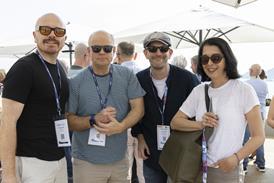




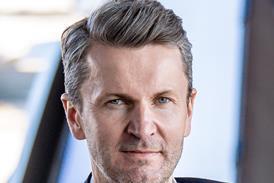
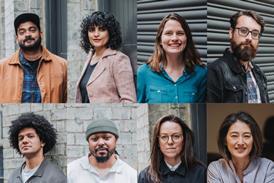
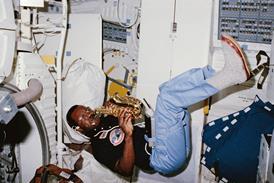
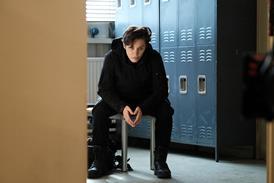
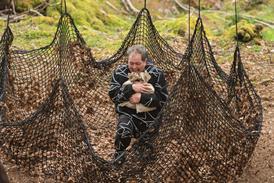

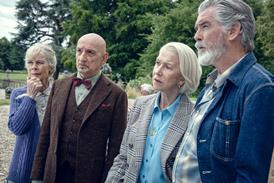





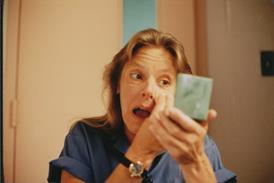
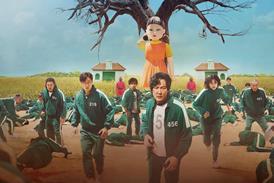
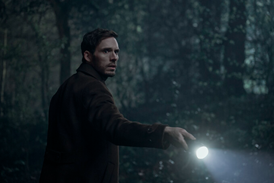



No comments yet